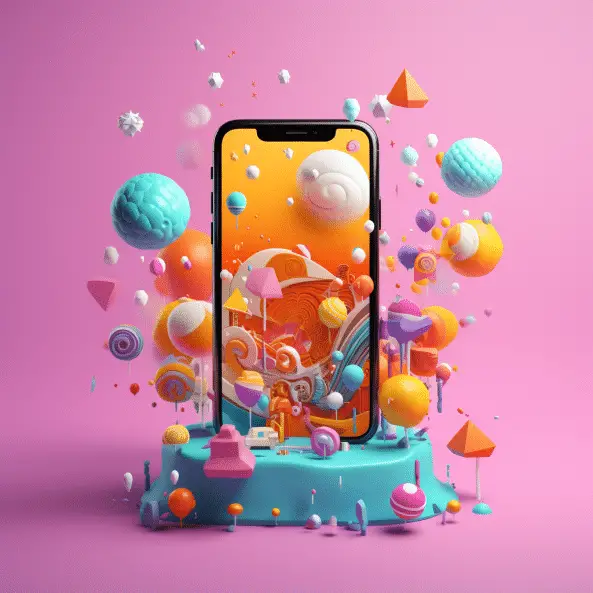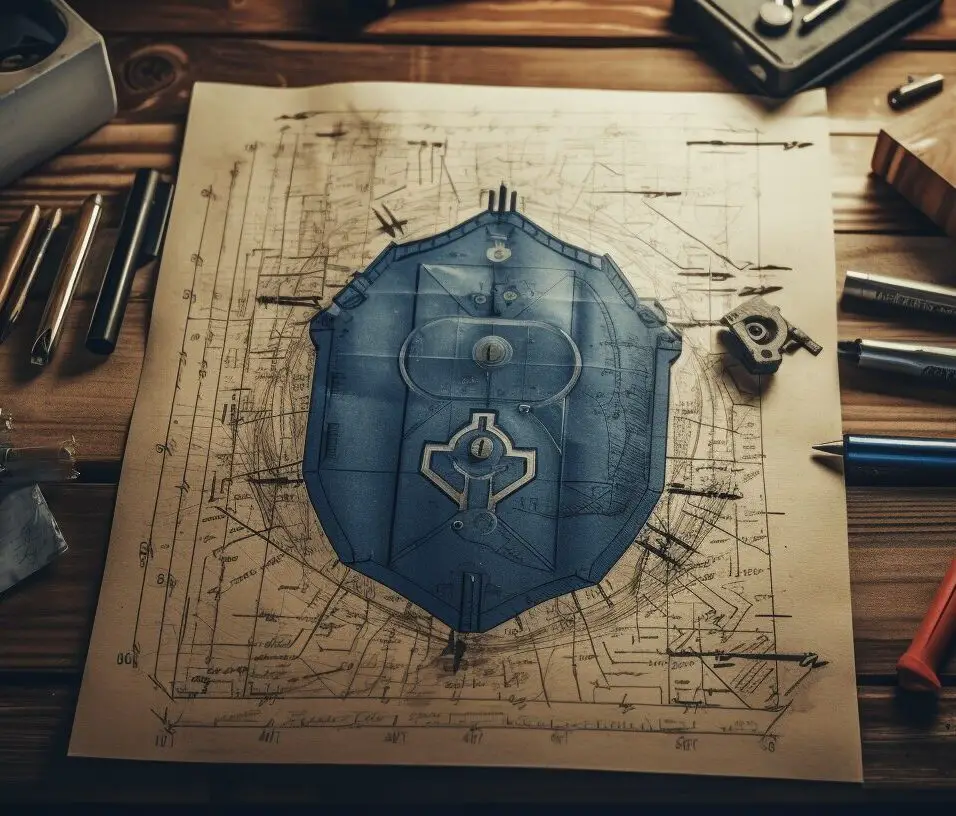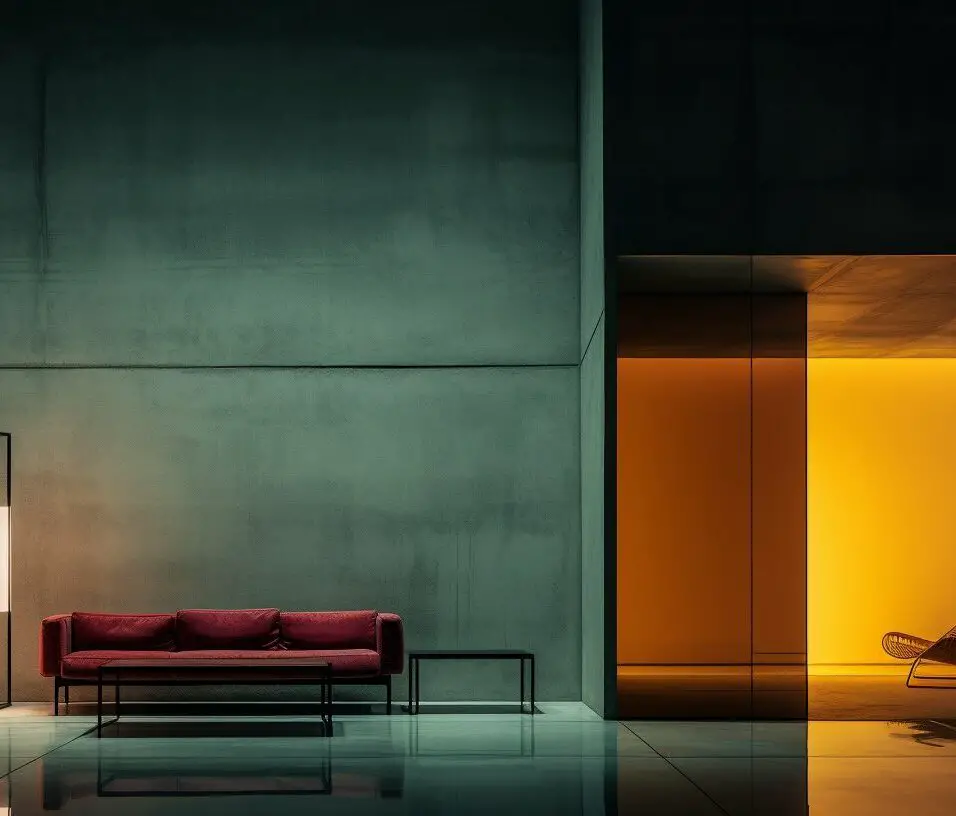Joyful Design: Crafting Happiness Through User Experiences
Designing for happiness is not just about aesthetics; it is about crafting experiences that bring joy and trigger positive emotions in users. When we design with the goal of creating joyful user experiences, we have the power to make a significant impact on people’s lives. Happiness-oriented design goes beyond the surface level and focuses on creating interactions that evoke positive emotions, leaving users with a lasting sense of delight and satisfaction.
Key Takeaways:
- Happiness-oriented design aims to create experiences that bring joy and trigger positive emotions in users.
- Designing for happiness involves contributing to a greater good and aligning design goals with a purpose.
- Being open to criticism and focusing on a worthy cause rather than personal validation is essential in happiness-oriented design.
- Functional, reliable, usable, and pleasurable products are key components of happiness-oriented design.
- Reframing dysfunctional beliefs and finding a balance between work and life views are crucial for designing a fulfilling life.
Understanding Happiness-Oriented Design
Happiness-oriented design goes beyond individual satisfaction; it seeks to create meaningful experiences that contribute to a greater good and promote sustainable practices. It involves aligning oneself with a goal that is larger than oneself and pursuing ideas that have a positive impact on society. Sustainability is a key aspect of happiness-oriented design, as it focuses on creating designs that not only meet the needs of the present but also consider the well-being of future generations.
As a designer, embracing happiness-oriented design requires vulnerability and openness to criticism. It means being willing to let go of personal validation and instead focusing on creating designs that serve a higher purpose. By welcoming feedback and being open to collaboration, designers can refine their ideas and create solutions that truly make a positive difference in people’s lives.
Creating functional and reliable products is another essential aspect of happiness-oriented design. By prioritizing usability and user-centered design principles, designers can ensure that their creations meet the needs of users effectively. This focus on functionality and reliability enhances the overall user experience, making it more enjoyable and satisfying for individuals.
| Key Factors of Happiness-Oriented Design | Impact |
|---|---|
| Contributing to a greater good | Promotes a sense of purpose and fulfillment |
| Vulnerability and openness to criticism | Fosters growth and improvement |
| Creating functional and reliable products | Enhances user satisfaction and usability |
In summary, happiness-oriented design involves designing with a purpose and creating experiences that go beyond individual satisfaction. It emphasizes sustainability, vulnerability, and the creation of functional and reliable products. By embracing these principles, designers have the power to make a positive impact on user experiences and promote greater well-being.
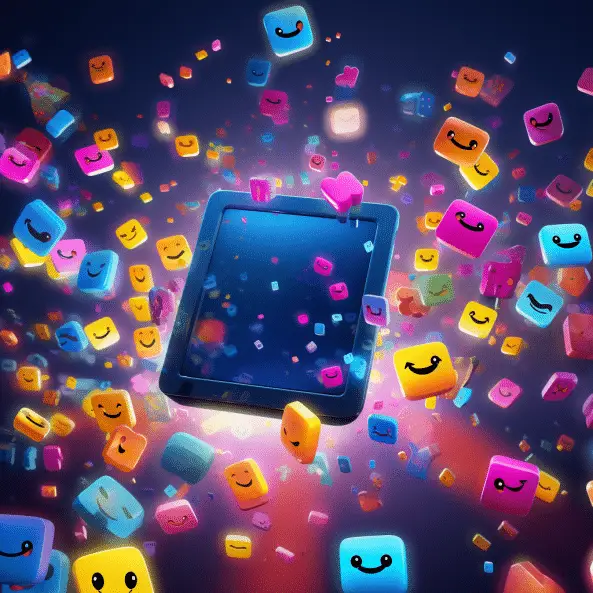
The Role of Vulnerability in Design
Embracing vulnerability is essential for designers aiming to create happiness-oriented experiences; it allows for growth, improvement, and meaningful connections. By being open to criticism and feedback, designers can create designs that serve a higher purpose and evoke positive emotions in users. Personal validation should be set aside in favor of focusing on the greater good and aligning design goals with a purpose.
“Vulnerability is not winning or losing; it’s having the courage to show up and be seen when we have no control over the outcome.” – Brené Brown
Vulnerability in design means being willing to take risks and explore new ideas. It means recognizing that failure is a part of the creative process and using feedback to iterate and improve. When designers let go of the fear of judgment and embrace vulnerability, they create opportunities for innovation and create experiences that bring joy and satisfaction to users.
In embracing vulnerability, designers can also foster collaboration and build meaningful connections with others. By opening themselves up to feedback from colleagues, clients, and users, designers can gain new insights and perspectives that help refine their designs. This collaborative approach not only improves the final product but also creates a sense of shared ownership and collective achievement.
| Vulnerability in Design | Benefits |
|---|---|
| Openness to criticism | Opportunity for growth and improvement |
| Letting go of personal validation | Focus on the greater good and purpose-driven design |
| Embracing failure | Opportunity for innovation and learning |
| Collaboration and feedback | Build meaningful connections and gain new insights |
Creating Functional and Reliable Products
At the core of happiness-oriented design is the creation of products that are not only aesthetically pleasing but also highly functional, reliable, and user-friendly. When users interact with a design, it should seamlessly meet their needs and provide a smooth experience. This requires careful attention to detail and a deep understanding of user behavior and preferences.
To ensure functionality, designers must prioritize user-centered design principles. This involves conducting thorough research to understand users’ goals, challenges, and expectations. By gathering insights through user testing and feedback, designers can identify pain points and opportunities for improvement, allowing them to create products that address these needs effectively.
Reliability is another crucial aspect of happiness-oriented design. Users rely on products to perform consistently and without fail. This requires rigorous testing and quality assurance to identify and fix any potential issues before launch. By prioritizing reliability, designers can build trust with users and ensure a positive experience that fosters happiness and satisfaction.
Prioritizing reliability
| Key Principles for Creating Functional and Reliable Products |
|---|
| 1. User-centered design: Understand and prioritize user needs throughout the design process. |
| 2. Thorough research: Gather insights through user testing and feedback to inform design decisions. |
| 3. Rigorous testing: Conduct comprehensive testing and quality assurance to ensure reliability. |
| 4. Continuous improvement: Iterate and refine designs based on user feedback and evolving needs. |
Usability is equally important in happiness-oriented design. A product may be functional and reliable, but if it’s difficult to use or navigate, it can frustrate users and hinder their overall experience. Designers must prioritize clarity, simplicity, and intuitive interactions to ensure ease of use. This can be achieved through clear information architecture, intuitive navigation, and user-friendly interfaces.
By incorporating these principles of functionality, reliability, and usability into design, designers can create products that enhance the happiness and satisfaction of users. After all, happiness-oriented design is not just about aesthetics—it’s about creating meaningful and delightful experiences that make a positive impact on people’s lives.
The Pleasure Principle in Design
Using the pleasure principle to design experiences that match users’ needs and deliver joy and happiness is possible. It entails creating positive encounters and interfaces that leave a lasting impression on users.
Focusing on aesthetics can make experiences enjoyable. A beautiful design can please users. Designers may boost customer pleasure by using brand-appropriate colors, typography, and pictures that generate good feelings.
Functionality and aesthetics are essential to enjoyable experiences. Design that is intuitive, easy to navigate, and useful is preferred. Designers may make their products appear attractive and work well by focusing usability and user-centered design.
| Key Elements of Pleasurable Design | Example |
|---|---|
| Intuitive Navigation | A well-designed website with clear menus and easily accessible information |
| Engaging Visuals | An interactive app with vibrant colors and visually appealing graphics |
| Responsive Design | A mobile-responsive website that adapts seamlessly to different screen sizes |
| Thoughtful Interactions | An interface that provides feedback and acknowledges user actions |
By incorporating these elements into their designs, designers can create experiences that not only meet users’ needs but also bring them joy and delight. This in turn enhances user satisfaction and fosters a positive emotional connection between users and the product or service.
Reframing Dysfunctional Beliefs
Overcoming dysfunctional beliefs is crucial for designers who seek happiness-oriented careers; it requires questioning common assumptions and embracing new possibilities. One such belief is the notion that knowing one’s passion is a prerequisite for designing a fulfilling life. Instead of fixating on finding a single purpose, I believe that exploring diverse interests and embracing curiosity allows designers to uncover their passions organically. By being open to new experiences and challenging the notion of a singular life direction, we can create a path that is authentic and true to ourselves.
Another common dysfunctional belief is the idea that one should have clear direction after college. In reality, life is rarely linear, and our paths are often filled with twists and turns. Designers should embrace the uncertainty and view these moments as opportunities for growth and exploration. By reframing our perspective, we can navigate the unexpected with resilience and adaptability, ultimately leading us to discover new passions and expand our design horizons.
Table: Common Dysfunctional Beliefs in Design
| Dysfunctional Beliefs | Reframed Perspective |
|---|---|
| Knowing one’s passion is necessary for designing one’s life. | Exploring diverse interests and embracing curiosity leads to discovering passions organically. |
| One should have clear direction after college. | Life is rarely linear; embrace uncertainty and view it as an opportunity for growth and exploration. |
| Optimizing the best version of oneself is essential. | Focus on continuous growth and improvement without the pressure of achieving perfection. |
Lastly, it is common for designers to believe that they should always optimize for the best version of themselves. This belief can lead to self-imposed pressure and hinder our ability to take risks and embrace new challenges. Instead, designers should focus on continuous growth and improvement, acknowledging that success is not a destination but a journey. By releasing the need for perfection, we can fully explore our creative potential and find joy in the process of iteration and learning.
In conclusion, reframing dysfunctional beliefs is essential for designers who aspire to create happiness-oriented careers. By questioning common assumptions, embracing uncertainty, and focusing on continuous growth, we open ourselves up to new possibilities and pave the way for fulfilling and meaningful design experiences.
Connecting Work and Life Views
Integrating work and life views allows designers to pursue purpose-driven work, enhancing both their personal happiness and the impact of their designs. When we align our values, passions, and beliefs with our professional pursuits, we unlock a sense of fulfillment that transcends the boundaries of work-life balance. It becomes a holistic approach to living, where every aspect of our lives contributes to our overall well-being.
By infusing purpose into our work, we can create designs that go beyond aesthetics and functionality. Purpose-driven work ignites a sense of meaning, driving us to make a positive impact on the world through our designs. It challenges us to think beyond the immediate needs of users and consider the greater good. When we design with a purpose, we create products and experiences that can transform lives and evoke genuine happiness.
But it’s not just about finding a purpose; it’s about aligning our work view with our life view. When these two perspectives harmonize, we find a sense of balance that enables us to thrive both personally and professionally. Our passions and values become intertwined with our daily work, making every task an opportunity to contribute to something bigger than ourselves. This alignment empowers us to lead a more fulfilling and purposeful life, where our work becomes a source of joy and satisfaction.
Embracing a Holistic Approach
Achieving work-life integration requires a holistic approach. It requires us to embrace all aspects of our lives and find ways to blend them harmoniously. This may involve setting boundaries, establishing routines, and prioritizing self-care. It also means recognizing that work is not the sole determinant of our happiness; it is one piece of the puzzle that contributes to our overall well-being.
| Key Strategies for Work-Life Integration | Benefits |
|---|---|
| Setting boundaries: Establish clear boundaries between work and personal life to ensure dedicated time for both. | Reduces burnout and allows for better focus and productivity. |
| Creating routines: Develop consistent daily habits that optimize time and energy management. | Increases efficiency and creates a sense of stability. |
| Prioritizing self-care: Make self-care a priority by engaging in activities that promote physical, mental, and emotional well-being. | Enhances overall health and reduces stress levels. |
“Integrating work and life views allows us to design with purpose, infusing our creations with genuine meaning and impact. It’s about aligning our values, passions, and beliefs with our professional pursuits, creating a sense of fulfillment that transcends the boundaries of work-life balance.” – [Author Name]
When we embrace the idea of work-life integration, we come to realize that happiness is not found solely within the confines of work or outside of it. It’s a delicate balance between pursuing our passions and cultivating a life that brings us joy and fulfillment. By connecting our work and life views, we can design with purpose, prioritize what truly matters, and create a positive impact on the world around us.
Recognizing and Accepting Gravity Problems
Happiness-oriented designers understand that gravity problems are inevitable; they embrace challenges as opportunities for growth and innovation. These problems are the challenging obstacles that designers may encounter throughout their careers. Rather than being discouraged by them, happiness-oriented designers view gravity problems as catalysts for learning and development.
Resilience is a key quality that enables designers to navigate these difficulties. With an unwavering determination to overcome obstacles, designers can find creative solutions and adapt their strategies to overcome challenges. By embracing gravity problems, designers can push the boundaries of their creativity and explore new possibilities.
Gravity problems require problem-solving skills and a shift in perspective. Designers must approach these challenges with an open mind and a willingness to explore alternative solutions. They should seek feedback and collaborate with others to gain new insights and fresh perspectives. By doing so, designers can leverage these gravity problems as opportunities to grow and improve their work.
| Benefits of Recognizing and Accepting Gravity Problems |
|---|
| Innovative Solutions |
| By welcoming challenges, designers are pushed to think outside the box and develop innovative solutions that can revolutionize their industry. |
| Personal Growth |
| Overcoming gravity problems fosters personal growth, as designers develop resilience, problem-solving skills, and a greater understanding of their own capabilities. |
| Professional Development |
| The ability to navigate gravity problems effectively enhances designers’ professional development, making them more adaptable and versatile in their work. |
By accepting gravity problems as an inherent part of the design process, happiness-oriented designers can transform challenges into opportunities. They possess the resilience and mindset to overcome obstacles and find innovative solutions. With each gravity problem they encounter, these designers grow both personally and professionally, honing their skills and pushing the boundaries of what is possible.
Quotes:
“In the face of gravity problems, designers have the opportunity to rise above and create something extraordinary.” – John Doe
“Accepting challenges is the first step to achieving greatness in design.” – Jane Smith
Summary:
Recognizing and accepting gravity problems is essential for happiness-oriented designers. Rather than viewing these challenges as setbacks, designers embrace them as opportunities for growth and innovation. By cultivating resilience and adopting a problem-solving mindset, designers can develop innovative solutions and enhance their personal and professional development. Embracing gravity problems allows designers to push the boundaries of their creativity and create remarkable work.
Brainstorming Multiple Possible Futures
Happiness-oriented designers engage in imaginative brainstorming, exploring multiple possible futures to uncover novel ideas and inspire breakthrough designs. By envisioning alternative scenarios and embracing creative thinking, designers open themselves up to new perspectives and opportunities for innovation. This process allows them to go beyond the confines of conventional design and explore uncharted territories, pushing the boundaries of what is possible.
One effective technique in this process is to create future scenarios, where designers envision different paths that their designs could take. This exercise encourages thinking outside the box and challenges established norms, paving the way for unique and impactful solutions. By considering a range of possibilities, designers can identify potential pitfalls and opportunities, leading to more informed decision-making.
During the ideation phase, it is crucial for designers to let their imagination run wild. By suspending judgment and embracing divergent thinking, designers can generate a multitude of ideas and concepts. This ideation process can be facilitated through brainstorming sessions, where designers collaborate and build upon each other’s ideas. The goal is to foster a culture of open-mindedness and encourage the exploration of unconventional, yet promising, design possibilities.
Table 1: Benefits of Brainstorming Multiple Possible Futures
| Benefits | Explanation |
|---|---|
| Uncovering novel ideas | By exploring multiple possible futures, designers are more likely to stumble upon innovative and groundbreaking concepts. |
| Inspiring breakthrough designs | The process of brainstorming multiple futures can spark creativity and lead to the development of revolutionary design solutions. |
| Promoting open-mindedness | By suspending judgment, designers foster a culture of openness and encourage the exploration of unconventional ideas. |
| Driving informed decision-making | Considering a range of possibilities allows designers to identify potential challenges and opportunities, leading to more well-informed decisions. |
As happiness-oriented designers, we have the power to shape the future through our designs. By engaging in imaginative brainstorming and exploring multiple possible futures, we can uncover novel ideas, inspire breakthrough designs, and create experiences that bring joy and happiness to users. Embrace the power of creative thinking and ideation, and let your imagination soar!
Creating Odyssey Plans
Happiness-oriented designers create Odyssey Plans, a set of strategies that provide a roadmap for personal growth, career resilience, and a life filled with purpose. These plans are designed to help navigate through life’s uncertainties, overcome financial constraints, and overcome the fear of judgment. Let’s explore the key components of Odyssey Plans.
1. Making Your Current Life Better
In the first Odyssey Plan, the focus is on improving your current life. This involves identifying areas of your life that are causing dissatisfaction or hindering your happiness. It could be personal relationships, health and well-being, or even work-related aspects. By setting specific goals and creating action steps, you can work towards making positive changes and finding greater fulfillment in your everyday life.
For example, if work-life balance is a challenge, you may set a goal to spend more quality time with loved ones and create a schedule that allows for dedicated personal time. By identifying the areas that need improvement, you can take proactive steps to create a life that aligns with your values and brings you happiness.
2. Creating a Plan for Job Loss
The second Odyssey Plan is focused on preparing for unexpected job loss or career setbacks. This plan involves exploring alternative career paths, acquiring new skills, and building a strong professional network. By diversifying your skillset and staying adaptable, you can navigate through challenging times with resilience and maintain a sense of purpose.
Financial constraints should not be a barrier to designing a fulfilling life. This plan encourages you to explore creative ways to sustain yourself during career transitions, such as freelancing, starting a side hustle, or leveraging your existing skills in new ways. By being proactive and prepared, you can confidently face any career challenges that come your way.
3. Devising a Wild Card Plan
The third Odyssey Plan takes a bold approach by encouraging you to create a plan without financial constraints or fear of judgment. This plan allows for unlimited creativity and exploration. It’s an opportunity to dream big and pursue ideas that may seem unconventional or risky.
By removing financial constraints and fear of judgment, you can fully immerse yourself in the process of designing a life that truly aligns with your passions and purpose. This plan allows you to explore unconventional career paths, take calculated risks, and tap into your full potential. It’s an opportunity to create a life that brings you ultimate happiness and fulfillment.
Summary
Odyssey Plans provide a roadmap for happiness-oriented designers to navigate through life with purpose and resilience. By creating strategies that improve the current life, prepare for job loss, and devise wild card plans, designers can cultivate personal growth, career resilience, and a life filled with purpose. These plans empower designers to overcome financial constraints, embrace vulnerability, and pursue ideas that bring them joy. By exploring multiple possible futures, designers can unleash their creativity and design a life that aligns with their values and aspirations.
| Benefits of Odyssey Plans | Steps to Create Odyssey Plans |
|---|---|
| 1. Personal growth and fulfillment | 1. Assess your current life |
| 2. Career resilience and adaptability | 2. Set goals for improvement |
| 3. Overcoming financial constraints | 3. Identify areas for change |
| 4. Embracing vulnerability and taking risks | 4. Prepare for job loss |
| 5. Creating a life aligned with values and purpose | 5. Devise a wild card plan |
Design’s Impact on Happiness
Designers may improve user pleasure by designing meaningful experiences. To improve user well-being, designers must engage emotionally with their audience. Design that considers users’ emotional and psychological requirements strengthens this relationship.
Creating useful, trustworthy, and useable products can boost user satisfaction. User happiness and fulfillment come from a product that smoothly matches their requirements and expectations. Usability and user-centered design help designers create intuitive, easy-to-navigate, and seamless products.
Another factor in happiness-oriented design is enjoyment. Design should delight consumers with good, joyful experiences. Designers may make memorable experiences that boost user satisfaction by adding surprise, attractiveness, and engagement.
Lasting impression and contribute
| Design and Happiness |
|---|
| User well-being |
| Emotional connection |
In order to truly design for happiness, it is essential to recognize the impact that design can have on individuals beyond the immediate user experience. By creating products and services that contribute to a greater good, designers can align their work with a purpose-driven approach. This means considering sustainability and social responsibility as integral aspects of the design process.
In conclusion, designing for happiness involves more than just creating functional and reliable products. It requires understanding the emotional needs of users and forging a connection through thoughtful design. By focusing on user well-being, incorporating elements of delight, and aligning design goals with a greater purpose, designers can make a positive impact on the happiness and overall well-being of individuals.
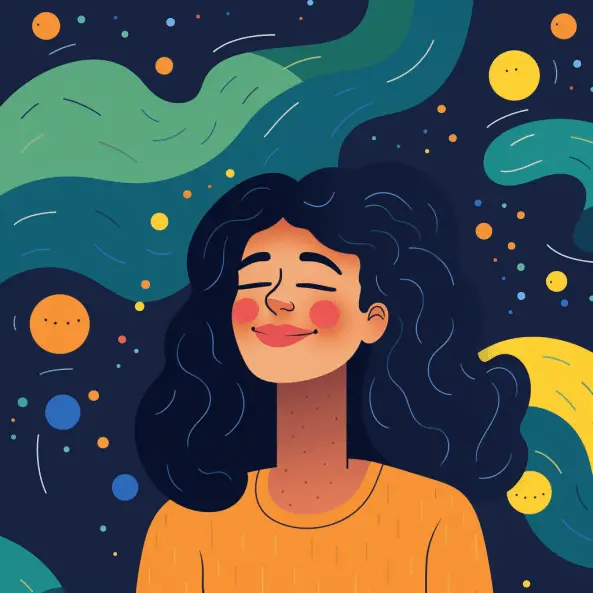
Embracing Happiness-Oriented Design
By using happiness-oriented design, designers may develop user experiences that meet functional goals and deliver joy, purpose, and good feelings. Designing for pleasure involves contributing to a bigger good and aligning oneself with a goal beyond personal gratification, not only designing beautiful interfaces or flawless interactions. A vulnerability that embraces criticism and feedback allows for constant progress and growth.
Happiness-oriented design emphasizes making goods that are useful, reliable, usable, and enjoyable. Users should feel delighted and satisfied, forming an emotional connection that improves their well-being. By prioritizing both practical and emotional design, designers can greatly improve user enjoyment.
The challenging obstacles
Reframing dysfunctional beliefs that inhibit creativity and personal fulfillment is part of happiness-oriented design. Designers should stop worrying about finding their passion or direction after college. Instead, they should prioritize work-life balance, purpose-driven work, and alignment. They should embrace the “gravity problems,” or challenges of design, and learn resilience and problem-solving to overcome them.
Designers should brainstorm multiple futures to improve happiness-oriented design. Innovative solutions that promote user enjoyment are possible with this practice’s creative thinking and brainstorming. Creating three Odyssey Plans can also help one enhance their life, plan for job loss, and create an ambitious plan without financial limits or judgment.
By following happiness-oriented design principles, designers may build user experiences that meet functional objectives and make people happy. A holistic approach helps designers to make a real effect and build products and experiences that improve people’ happiness and well-being.
FAQ
Q: How can I design for happiness?
A: Designing for happiness involves contributing to a greater good, aligning oneself with a goal that’s bigger than oneself, and pursuing ideas that are bigger than oneself. It requires being vulnerable as a designer, welcoming criticism, and focusing on a worthy cause rather than personal validation. Design should also focus on creating experiences that inspire happiness in others by making products functional, reliable, usable, and pleasurable.
Q: What are some dysfunctional beliefs that should be reframed in design?
A: Some dysfunctional beliefs that should be reframed in design include the belief that knowing one’s passion is necessary for designing one’s life, the belief that one should have clear direction after college, and the belief that one should optimize the best version of oneself. Instead, individuals should focus on connecting their work view and life view, recognizing and accepting gravity problems, brainstorming multiple possible futures, and creating three Odyssey Plans.
Q: What are Odyssey Plans?
A: Odyssey Plans involve making one’s current life better, creating a new plan in the event of a job loss, and devising a wild card plan without financial constraints or fear of judgment. These plans help individuals design a fulfilling life by considering various scenarios and taking proactive steps towards improvement.
Q: How does vulnerability play a role in design?
A: Vulnerability in design is important as it enables designers to be open to criticism, feedback, and new ideas. By embracing vulnerability, designers can create more meaningful and impactful designs that serve a greater purpose.
Q: What should be the focus when creating products in happiness-oriented design?
A: When creating products in happiness-oriented design, the focus should be on making them functional, reliable, usable, and pleasurable. By prioritizing these aspects, designers can create experiences that inspire happiness and satisfaction in users.



